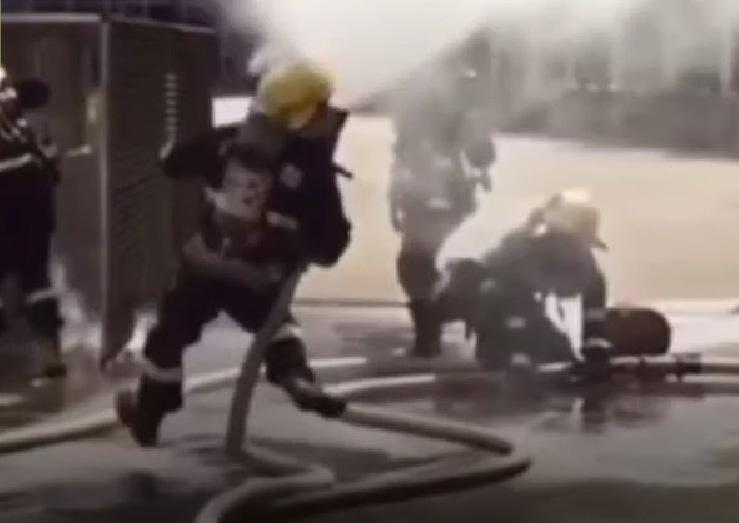QUEEN AIR TALES

ONE NIGHT A NERVOUS passenger remarked that flames were being emitted from the augmenter tube exhausts, so I nicknamed the aircraft the Beech Belch-Fire.
This was appropriate, as the aircraft also had very small ashtrays, and being a chain smoker at the time I had several mini-in-flight cockpit emergencies sparked by ashtray fires.
The aircraft was easy to fly, but the 380 hp supercharged Lycoming engines could be temperamental. We had no cowl flaps for cooling on these engines, while the same engines fitted to the stretched Grand Aero Commanders had cowl flaps that made the engines less unpredictable.
One morning I was taking off from Gaborone without passengers. At about 70 knots the left engine started running rough, so I aborted the takeoff. Then the engine stopped and puffs of smoke came out of the top of the cowling.
I asked the control tower to advise the airport fire station of the situation. I turned around on the runway and managed to taxi back to the parking area near the fire station, shut down, and turned off the fuel selectors.
Grabbing my flight bag, I exited the aircraft, while shouting to the scurrying fireman to hurry. Thicker smoke was floating out of the left nacelle.
The firemen marched onto the apron carrying sections of thick fire hose. Once the sections had been joined the valve was opened. However, the extreme pressure generated by the gushing hose overcame the strength of the fireman holding it. He was lifted off his feet as thick white foam sprayed over the car park and terminal building, all well away from the aircraft.
A second firemen arrived and tried to redirect the hose toward the smoking engine nacelle.
Diese Geschichte stammt aus der January 2025-Ausgabe von SA Flyer Magazine.
Starten Sie Ihre 7-tägige kostenlose Testversion von Magzter GOLD, um auf Tausende kuratierte Premium-Storys sowie über 9.500 Zeitschriften und Zeitungen zuzugreifen.
Bereits Abonnent ? Anmelden
Diese Geschichte stammt aus der January 2025-Ausgabe von SA Flyer Magazine.
Starten Sie Ihre 7-tägige kostenlose Testversion von Magzter GOLD, um auf Tausende kuratierte Premium-Storys sowie über 9.500 Zeitschriften und Zeitungen zuzugreifen.
Bereits Abonnent? Anmelden

PIPISTREL'S ELECTRO VELIS
THE FUTURE IS HERE!

LIVING THE DREAM-HEADING OFFSHORE
I dearly miss the mountains of the Western Cape, but I'm soon reminded that my \"office\" offers one of the best views, regardless of where I happen to be located on this planet. Today is no different, as ocean, clouds, and sunrise all conspire to produce a breathtaking vista while we settle down in the rhythmic gallop of the big Sikorsky.

CANADIAN C152 spin
Jim’s Note: The SACAA seem to have lost all but the newest and oldest accident reports. This is not a bad thing because I have found Canadian reports are excellent and have selected this one, because it deals with issues very relevant to South Africa – particularly density altitude, spinning, and post maintenance test flight

SPECIAL RULES AREA CHARTS
Imagine a chart that doesn’t rely on batteries that unexpectedly let you down. Imagine one that covers a large area in detail, yet that weighs a few grams.

FLIES ON THE CEILING
Allow me for a moment to explore one of the great mysteries of aviation with a subject that has been around ever since Immelman rolled his Fokker rightway up at the top of a loop over the shell-holed killing fields of World War 1.

INTERESTING AVIATORS I HAVE MET
I remember back in 1960 being in Nairobi West (where Wilson Airport is situated) standing with my mother watching a train pass by, filled with refugees from the Belgian Congo. The train was full, with many of the people dressed in pyjamas, or whatever they could find to wear in their haste to leave.

EVACUATOR
I have had a lot of fun during this past few years of flying. I have sneaked a Twin Otter out of Algeria, over Libya, to Tripoli and thence, across the Mediterranean, to the historic twinkling jewel box of Malta, at night.

WHY AIR POWER IS KEY in the Ukraine War
There is evidence that with 'borrowed' F-16s and the recent arrival of French Mirage 2000s, improved Ukrainian air superiority may be the deciding factor that brings the Russians to the peace talks table.

JANUARY 2025
The new year is off to a good start with 15 aircraft having been registered.

FLYING AROUND THE KZN AIRFIELDS
In less time than it takes to drive from one side of Johannesburg to the other, you can fly to beautiful KZN to experience amazing scenery and some fantastic airfields and hospitality.
